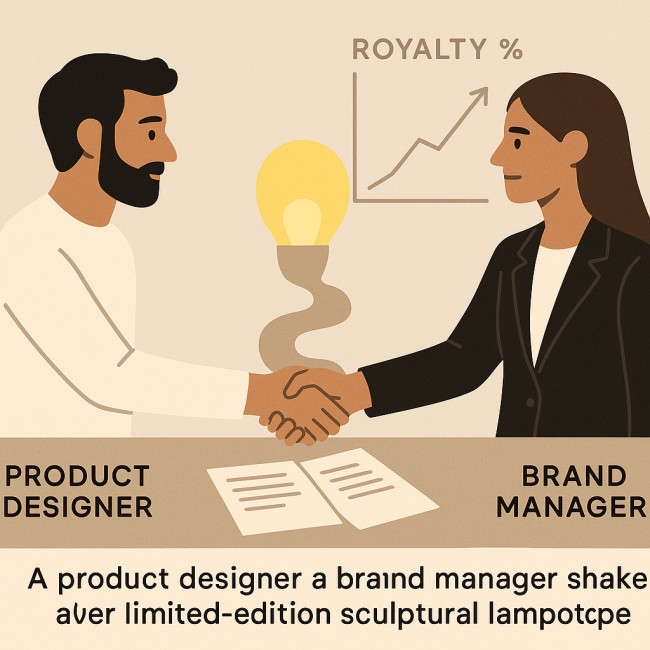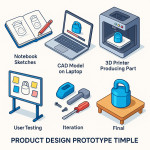Limited-edition object design: royalty models and licensing clauses explained
Limited-edition object design thrives on scarcity, storytelling and smart contracts. In this guide you will master the royalty models that protect your profit, discover the must-have licensing clauses and leave with a negotiation roadmap you can apply on your very next collaboration.
Why royalties matter in limited-edition object design
Unlike mass-produced goods, limited-edition object design projects rely on tight production runs, premium pricing and heightened collector expectations. A carefully structured royalty deal:
- Aligns incentives between designer and manufacturer.
- Rewards creative risk while controlling costs for brand partners.
- Creates predictable income beyond the initial design fee.
When collectors browse the curated craft-designer directory, they assume every piece is backed by clear IP terms. Meeting that expectation up-front builds trust and speeds sales.
Common royalty models for limited runs
Below you will find four royalty structures dominating limited-edition object design deals in 2024. Choose the one that fits your production scale, cost base and bargaining power.
| Model | How it works | Typical rate | Best for |
|---|---|---|---|
| % of wholesale price | Designer receives a cut of the price the retailer pays the manufacturer. | 6 – 12 % | Runs above 200 units where wholesale pricing is stable. |
| % of retail price | Royalties calculated on the end-consumer price. | 8 – 15 % | Collectible drops under 100 units sold direct-to-consumer. |
| Per-unit flat fee | Fixed euro amount per item produced, regardless of later discounts. | €3 – €20 | When production costs fluctuate and transparency is low. |
| Hybrid structure | Lower upfront advance plus royalty kicker once sales pass a threshold. | Advance + 5 – 8 % | Projects with uncertain demand or new market entries. |
Visualising royalty compression at scale
Essential licensing clauses to negotiate
1. Scope of rights
Specify whether the partner may reproduce, modify or create derivative works. Limiting the scope avoids unwanted mass-market spin-offs.
2. Exclusivity and territory
For ultra-scarce collections, a brand often requests worldwide exclusivity. If you accept, raise the royalty percentage or shorten the term.
3. Edition size and numbering
State the exact unit ceiling, numbering method and artist proofs allowed. Tie overruns to penalty multiples of the standard royalty.
4. Audit and reporting
Grant yourself the right to examine sales figures at least once per year. Late or inaccurate reports should trigger interest on unpaid royalties.
5. Termination triggers
Include clear exit routes: missed royalty payments, quality drift or failure to respect prototype timeline benchmarks (detailed guide).
6. Sustainability and material clauses
Many buyers expect eco transparency. Mirror your sustainable material sourcing commitments inside the contract to widen market appeal.
Step-by-step negotiation roadmap
- Pre-calculate margins. Use cost sheets plus your desired royalty to spot deal-breakers early.
- Anchor with precedent. Cite public benchmarks or prior deals to justify your rate.
- Offer two models. Example: flat €10 per unit or 9 % of retail—let the partner reveal which hurts less.
- Protect your scale-up path. If the collection sells out, reserve first rights for a follow-up run. Read how to scale production from one-off to small batch.
- Lock marketing duties. Add a clause requiring minimum quarterly promotion—your royalties depend on sell-through.
- Review SEO terms. Agree on credit lines and backlinks to your portfolio; see SEO quick wins for object designers for wording ideas.
Quick knowledge check
FAQ
- What is the industry-standard advance for limited-edition object design?
- Advances range from €1 000 to €10 000 depending on complexity, typically recouped against future royalties.
- Can I retain 3D files while licensing production rights?
- Yes. Grant a manufacturing licence only, keep the underlying CAD files confidential and charge extra for derivative works.
- How do I handle returns or unsold stock?
- Include a sell-off period with reduced royalties or buy-back rights to avoid warehouse dumps that devalue your design.
- Does numbering each piece really increase value?
- Yes. Numbering builds scarcity, supports transparency in audits and boosts secondary-market prices that reinforce your brand.
Conclusion and next steps

By mastering royalty math, locking airtight licensing clauses and following a clear negotiation sequence, you transform limited-edition object design from a one-off pay-day into a sustainable revenue engine. Ready to draft your next contract? Put these insights to work today and watch your signature pieces earn long after the final unit ships.
Call to action: Download our free royalty calculator and start modelling your ideal deal now.











